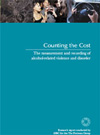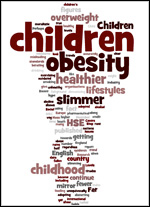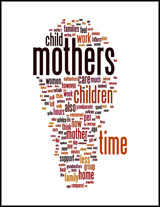The measurement and recording of alcohol-related violence and disorder
A report of research commissioned by the Portman Group
Introduction
Background
Alcohol is routinely thought to be a major cause of violence and disorder in the UK. Media coverage1 of the issue would certainly lead us to this conclusion, along with police statistics which regularly purport to show that between 60% and 80% of all violent crime is alcohol-related. In addition, a recent survey conducted by Alcohol Concern and Police Review indicated that 70% of police officers viewed alcohol as causing them greater problems than drug misuse.
There is nothing new about these claims. When MCM Research undertook fieldwork which led to the publication of Drinking and Public Disorder over 10 years ago, the work was conducted against a similar background of blaming alcohol consumption for a very large proportion of social ills and violent behaviour in particular.
Despite all of this it is still the case, as the Home Office and others have noted, that we still do not have any precise ways of even estimating the real impact that alcohol has on patterns of violent and anti-social behaviour in our society. We certainly know that there is, indeed, a problem of alcohol-related violence. It is apparent on even the most cursory examination of activity in and around town centre bars and clubs on Friday and Saturday nights - what is now referred to as the ‘night-time economy’. But as Anne Deehan noted2
"… there are no official statistics collected systematically making it impossible to gain a true picture of the role of alcohol in crime at a national level. Statistics prepared by Accident and Emergency departments in major hospitals also tend to lack consistency in both measurement and definition and are not collated on a national basis."
Not only are there serious gaps in data collection and collation methods, there are more fundamental problems of definition. The term ‘alcohol-related’ is sometimes taken to imply a direct causal relationship between the chemical ethanol and certain types of behaviour. Such an assumption is rarely supported by empirical evidence or theoretical perspectives. More often the term ‘;related’ is used to indicate a partial causal factor, with alcohol interacting with other individual, social and environmental factors to predispose certain behaviours. At the other end of the scale ‘alcohol-related’ refers to the fact that a violent disturbance simply involved one or more participants who had been drinking. In most cases — e.g. police and A&E department data — it is this latter definition which is implicitly used, making interpretation of the figures quite problematic. Data from ‘official’ sources also rarely distinguish between the perpetrators of violence and those who are the victims of such acts, adding further to the difficulties of interpretation.
These problems relating to the definition and recording of alcohol-related violence and crime and, therefore, the unreliability of much that passes for ‘evidence’ in this area have been recognised for a long time. Like any other crime measure it is also the case that reported statistics reflect police policies and levels of activity as much as they do the actual patterns of behaviour. High- profile policing in town centres, for example, coupled with a ‘zero tolerance’ of rowdy, inebriated behaviour, will result in a greater apparent problem of alcohol-related disorder than a more ‘softly, softly’ approach. Even the recent figures from the British Crime Survey, which indicate a 29% rise in violence inflicted by strangers, may reflect increasing sensitivity to such issues and a greater willingness now to define relatively minor incidents as ‘violent’ compared with previous years3.
Given all of these inherent problems it is unrealistic to expect that completely valid, reliable and unequivocal data can ever be obtained to measure the true scale and patterns of alcohol-related violence and disorder. There is an inherent ‘wooliness’ in the concept of ‘related’ and the definitions of ‘violence’ and ‘disorder’ are also far from clear-cut. Nevertheless, it was clear at the outset of this study that improvements to the present methods were clearly required if more meaningful conclusions concerning alcohol´s negative role in patterns of social behaviour were to be drawn, even if complete clarity might never be realised.
We were also concerned with identifying not only potentially more accurate ways of assessing alcohol-related problems at national and regional levels, but also with developing better ways of evaluating initiatives aimed at reducing such problems. As we noted earlier, we recognise that there is a problem of alcohol- related disorder in urban centres and elsewhere, even if we cannot really tell, on the basis of current evidence, how much. Given this, what seem to be the best ways of tackling such problems? Which initiatives appear to work better than others? How can budgets for crime reduction strategies in this area best be targeted? Without reliable definitions and measures of levels of alcohol-related problems we can only guess the answers to such questions.
Theoretical perspectives
Theoretical perspectives concerning the relationship between alcohol and aggression, disorder and crime have been discussed and evaluated extensively in previous reports and by several other authors — e.g. Marsh and Fox (1991), Fox and Marsh (1995), Parker (1998), etc. We do not, therefore, propose to deal with these issues in depth in the current report. We take as our perspective the notion, which has wide support in the academic and research community, that violent and disorderly behaviour is often associated with alcohol consumption primarily because of cultural traditions, social expectations, environmental factors and individual predispositions. There is little support for the idea that the chemistry of alcohol (ethanol) alone has any single, specific type of effect on behaviour.
An annotated bibliography of recent papers relating to the central issues of this report can be found on SIRC´s web site at www.sirc.org/resources/ alcohol_violence_biblio3.shtml. Reference to some empirical studies is made in this section of the report — particularly where they provide results that contrast with the perceptions of police and A&E informants.
Aims of the research
The principal aims of the research were as follow.
1. To elicit and clarify the views and perceptions of major stakeholders regarding the definition, measurement and recording of alcohol-related violence and disorder.
2. To identify at a national level the varying assumptions by the major stakeholders regarding the nature of the relationship between alcohol and anti-social behaviour.
3. To identify specific areas of inconsistency and misreporting in this context, both between different agencies and authorities and within single authorities at a national level.
4. To study in greater depth the above in six regions of the UK, including Scotland.
5. To recommend improved procedures for the definition, recording and collation of information from various sources relating to alcohol-related problems.
6. To propose concrete methods of evaluating the effectiveness of initiatives aimed at reducing alcohol-related violence and disorder.
Methods
In order to achieve the aims outlined above the research was designed to identify and subject to scrutiny the data recording practices of police, health and local government agencies. A series of consultations, both formal and informal, with the major stakeholders, including government departments and trade bodies, on all aspects of alcohol-related violence and disorder was also included.
More in-depth interviews and discussions were planned which aimed to elicit perceptions of the limitations of current recording practices, to identify potential ways of improving such practices and to explore means for more widespread data sharing and integration. This stage of the research was initially envisaged as comprising work in six regions of the UK. As we note later, however, this phase of the work was extended to cover a number of other locations and national bodies.
Additional work was undertaken for comparative purposes in The Netherlands
The final stage of the research consisted of questionnaire surveys administered to samples of police licensing officers, town centre managers and crime reduction partnerships. A telephone interview was also designed for A&E consultants.
The projected was directed by Dr Peter Marsh and managed by Simon Bradley. Felicity Peck acted as full-time researcher. Additional research was conducted by Anna Carnibella.
Respondents
The following individuals from a range of agencies, bodies and organisations were included in the qualitative research and consultation. We acknowledge their valuable assistance.
Richard Absalom — Safety and Risk officer, London Ambulance Service
Richard Adams — Crime Strategy Officer, Oxford City Council
Sergeant Carole Ajinkya — Licensing Officer, Bridewell, Bristol
Mr Ian Anderson — A&E consultant, Victoria Infirmary, Glasgow
Mr Asbury — Licensing Justice, Manchester Magistrates Court
Mark Beale — Project Lion
Diana Beard — STAG
Sergeant Steve Beety — Crime reduction officer, Devon & Cornwall Police
Chief Inspector Colin Benson — Bristol Police
Burt Bieleman — INTRAVAL
Paul Bird — Police Licensing Officer, Basildon
Nick Bish — ALMR
Chris Brereton — Operations Manager, Environmental & Public Protection, Cardiff
Alan Brown — Head of the Partnership Development Performance and Strategic Management Unit for the Police and Crime Reduction Group, Home Office
Peter Bourn — Harlow District Council
Mr Bryant — A&E consultant, Royal Sussex County Hospital
Roger Butterfield — Chairman, SELP
Wouter Buwalder — Landelijk Platform Tegen Geweld Op Straat (National Platform Against Street Violence)
Philip Carpenter — Chelmsford Borough Council
Paul Catley — Oxford Brookes University
Rebecca Chanellor — NHS Direct
Peter Chown — Licensing Officer, Basildon
Jon Collins — BEDA
Jim Connelly — A&E Consultant Nottingham
Sue Cooper — Assistant Police Licensing Officer, Chelmsford
Mick Corton — East Kent Health Authority
John Cousins — Community Policing Team, Epping
Sergeant Nigel Cruttenden — Crime Reduction Unit, Thanet Police
Wim van Dalen — Nationaal Instituut voor Gezondheidsbevordering en Ziektepreventie
PC Bill Denver — Thames Valley Police, Oxford
Simon Fisher — Police Licensing Officer, Harlow
Sergeant Lyn Gooding — Project Amethyst leader, Devon & Cornwall Police
Trevor Gwillam — Force Licensing Officer, Devon & Cornwall Police
Judy Hadfield — Hope Hospital, Salford
Sergeant Jo Hadley — Community Safety Headquarters, Chelmsford
Inspector Kevin Harris — Crime Reduction Officer, Devon & Cornwall Police
Mr John Hayworth — A&E consultant, Southampton General
Kevin Hemsworth — Rayleigh Community Policing Team
Mr Phillip Hormbrey — Senior Consultant, A&E, John Radcliffe Hospital, Oxford.
PC Gary Howarth — Licensing officer, Leeds Police
Stacey Howes — Epping Forest Council
Peter Hudson — Clacton Police Licensing Officer
Inspector Gordon Hunter — Edinburgh Police
Keith Jackson — London Ambulance Service
Sharon James — Project Support Nurse, A & E Unit, UHW
Sister Jamison — A&E, Royal Infirmary of Edinburgh
Mr Graham Johnson — Head clinician, St James´s Hospital, Leeds
Dr Alan Jones — A&E Consultant, Margate
Rita King — Deputy Director of Retail, BLRA
Bernard Lane — Head of Cross Cutting Crime, Action Against Crime & Disorder Unit, Home Office
Denise Langman — City Centre Manager, Cardiff County Council
Marcus Lapthorn — Oxford Town Centre Manager
Dr Keith Little — A&E consultant, Royal Infirmary of Edinburgh
Angus Livingston — Senior Solicitor, Glasgow
Mr Lockhart — Solicitor, Glasgow
Ian McConnell — Head of licensing, Southampton Magistrates Court
Stuart Macleod — Police and Reducing Crime Unit
Mr Mann — Liquor Licensing clerk, Manchester Magistrates Court
Superintendent David Martin — Strathclyde Police
Mr Millington — A&E consultant, Charing Cross Hospital
Tony Mernaugh — Town Centre Manager, Brighton
Nick Newman — Manager ‘Berlins’, Chair of Cardiff Licensees Forum
Julie Notts — NHS Direct
Roy Osborne — Police Licensing Officer, Southend
Dr O´Sullivan — A&E consultant, Bristol Royal Infirmary
Phil Phillips — BHA
Diana Potgieter — Licensing Clerk, Cardiff Magistrates Court
Kareen Plympton — Licensing Officer, Brighton Police
Steve Radburn — Government Office of the East Midlands
Martin Rawlings — Director of Retail, BLRA
Detective Chief Inspector Andrew Rhodes — Lancaster Police
Inspector John Richards — Bristol Police
Inspector Robin Rickard — Thames Valley Police, Oxford
Martin Reed — Chairman of Licensing Officer Forum, Chelmsford
Inspector Gary Roberts — Isle of Man Police
Marcus Roberts — NACRO
Ian Rothwells — City Centre Manager, Southampton
Sergeant Phil Sanders — Hammersmith Police
Professor Jonathan Shepherd — Maxillofacial surgeon, University of Wales College of Medicine
Roy Simmons — Assistant Directorate Manager, A&E Unit, Cardiff
Julian Skeens — Director, BISL
Mr George Sneddon — City Centre Manager, Glasgow
Graham Stevens — Brighton & Hove Drug Action Team
PC Linda Stevens — Licensing officer, Leeds Police
Mr Jimmy Stuart — Consultant A&E, North Manchester General Hospital
Victoria Swainson — South Wales Police, Project Data Analyst, TASC
Vicky Tanner — British Transport Police
Alan Tolmie — Tendring District Council
Mr Robin Touquet — A&E consultant, St Mary´s Hospital, Paddington
Sergeant Ian Tumelty — South Wales Police, Project Training Sergeant, TASC
Superintendent Kevin Tumelty — South Wales Police, Project leader, TASC
Georgina Wald — BII
Ann Waters — Data analyst, Bristol Police.
Alan Watts — City Centre Manager, Hammersmith
Colin Weston — Deputy Chair of Licensing Magistrates, Cardiff
Janet Witheridge — Deputy Director, Health & Social Issues, BLRA
Professor David Yates — Professor of Emergency Medicine, Hope Hospital, Salford






